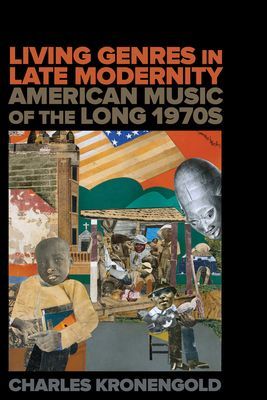
Living Genres in Late Modernity American Music of the Long 1970s
Living Genres in Late Modernity reassesses the role of genres in musical practice and experience. Exploring stylistic developments from the late 1960s through the early 1980s, including soul, funk, disco, pop, the nocturne, and the concerto, Charles Kronengold treats genres as unstable constellations of works, people, practices, institutions, technologies, money, conventions, forms, ideas, and multisensory experiences. What these genres share is a significant cultural moment: they arrive just after "the sixties" and are haunted by a sense of belatedness or loss, even as they embrace narratives of progress or abundance. These genres give us reasons--and means--to examine our culture's self-understandings. Through close readings and large-scale mappings of cultural and stylistic patterns, the book's five linked studies reveal how genres help construct personal and cultural identities that are both partial and overlapping, that exist in tension with one another, and that we experience in ebbs and flows.